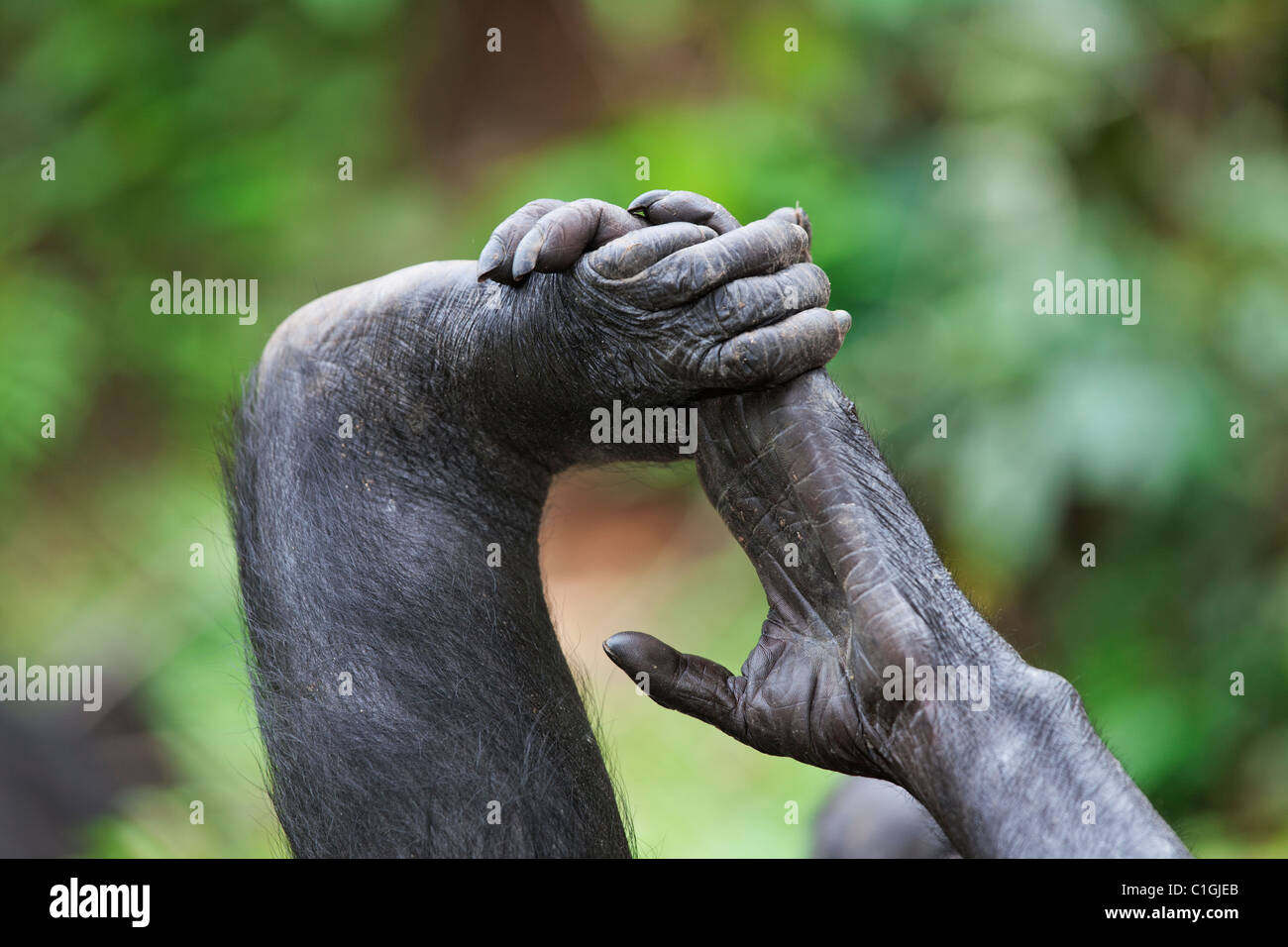

Furthermore, the human foot can store elastic energy more effectively during axial loading for the effective generation of propulsive force in the late stance phase.
#Chimpanzee hand like feet free#
Furthermore, the vertical free moment generated by the coupling motion of the calcaneus and tibia during axial loading is larger in the human foot, which can facilitate the compensation of the net yaw moment of the body around the COP during bipedal locomotion. Our results indicate that the center of pressure (COP) is located more anteriorly in the human foot than in the chimpanzee foot, indicating a larger stability margin in bipedal posture in humans. Physiologically realistic loading conditions of the feet during quiet bipedal standing are simulated. The contacts between the bones and between the foot and ground are solved using frictionless and Coulomb friction contact algorithms, respectively. The ligaments and plantar fascia are represented by tension-only spring elements.

Foot bones and the outer surface of the foot are extracted from computer tomography images and meshed with tetrahedral elements. To comparatively investigate the morphological adaptation of the human foot for achieving robust and efficient bipedal locomotion, we develop three-dimensional finite element models of the human and chimpanzee feet. 6Department of Radiology, Keio University School of Medicine, Tokyo, Japan.5Department of Clinical Biomechanics, Keio University School of Medicine, Tokyo, Japan.4Department of Veterinary Medicine, Azabu University, Sagamihara, Japan.3Department of Biological Science, Graduate School of Science, The University of Tokyo, Tokyo, Japan.2Graduate School of Human Sciences, Osaka University, Suita, Japan.1Department of Mechanical Engineering, Faculty of Science and Technology, Keio University, Yokohama, Japan.Kohta Ito 1,2 †, Tomoya Nakamura 1 †, Ryo Suzuki 1 †, Takuo Negishi 1,3, Motoharu Oishi 4, Takeo Nagura 5, Masahiro Jinzaki 6 and Naomichi Ogihara 1,3*


 0 kommentar(er)
0 kommentar(er)
